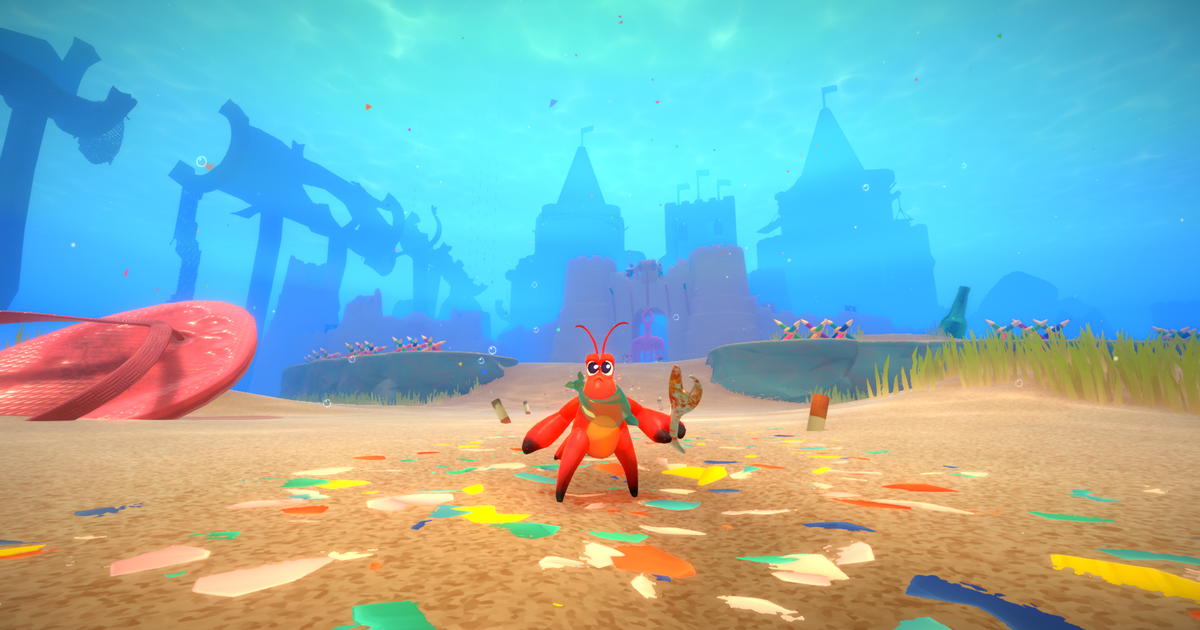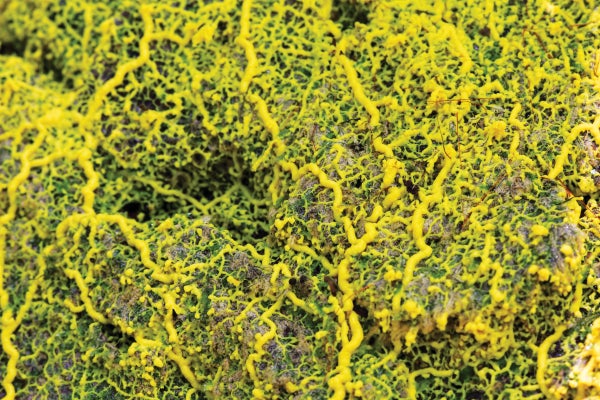It’s a bright sunny day and Kril the hermit crab is chilling in a tide pool when a literal loan shark pops out of the water. He informs Kril that this beach has just been taken over by a duchess who is now imposing a tax on its residents. Unable to pay up, the loan shark takes Kril’s shell as collateral, sending this otherwise conflict-averse crustacean into the open ocean to retrieve it.
Thus begins the story of Another Crab’s Treasure, released on April 25 by developer Aggro Crab. The undersea adventure that follows is one of the best soulslike games in recent memory. A soulslike, for the uninitiated, is a game that takes heavy inspiration from Dark Souls, the punishingly brutal, genre-defining game franchise from Japanese developer FromSoftware.
At a glance, the comparison seems befuddling. Whereas the worlds of FromSoftware games have been described as — well — dark, Another Crab’s Treasure is filled with cartoony aquatic critters who take more after the characters of Finding Nemo than the Lovecraftian monstrosities you’ll find in Dark Souls’ Lordran or Elden Ring’s the Lands Between.
But if there’s anything that video game critics have learned in recent years, it’s that the most successful soulslike don’t have to copy Dark Souls to the letter to craft an experience that resonates with its devoted fanbase. A game like Lords of the Fallen may look like a game FromSoftware would make, with its hulking knights and crumbling castles, but it doesn’t play like one. Where many soulslikes are all show and no substance, the beauty of Another Crab’s Treasure — like Dark Souls before it — lies hidden beneath the surface.
Another Crab’s Treasure incorporates all the fundamental trappings of a soulslike, including exploration-based gameplay, limited healing items, level-up currency that disappears upon death, and save points (“bonfires”) where players respawn and restock their loadout. In truth, however, all of this is just window dressing for two secret ingredients that helped make Dark Souls the cultural phenomenon we know and love today: environmental storytelling and engaging, nail-biting combat.
Another Crab’s Treasure serves up both of those things. Combat, while not nearly as challenging as it is in FromSoft’s titles, revolves around the mechanic of switching shells (something hermit crabs do in real life!) Each shell has a different ability – coke bottles can produce homing carbon bubbles, while sushi rolls can be eaten to regain health – and each has limited durability, meaning you’ll have to constantly switch and try out different playstyles.
Where much video game combat can devolve into mindless button mashing, Another Crab’s Treasure and Dark Souls give players a sense of agency, with the limited durability of each shell encouraging them to go into fights with different equipment, abilities and strategies. Outcomes aren’t determined by stats so much as skill so that, when you finally overcome a hair-pulling challenge, you feel all the more elated as a result.
Environmental storytelling is perhaps the most important, but frequently overlooked, aspect of the Dark Souls franchise, and indeed FromSoftware’s output as a whole. Like the Legend of Zelda games before it, Dark Souls doesn’t guide players through levels with minimaps or trails of shiny goodies. The story, while rich with lore and intrigue, isn’t spelled out through cutscenes, but must instead be pieced together through close-reading item descriptions and environmental clues like enemy and area design. (Players that rush through the levels without taking note of their surroundings will finish the game without knowing anything about the story, which is exactly why this aspect of soulslikes can fly under the radar.)
Another Crab’s Treasure does use some cutscenes and dialogue, but its conceptual approach to worldbuilding and storytelling remains close to its inspiration. It’s a game largely about pollution:.currency is called microplastics, and much of the ocean is infected by an oily plague (another soulslike narrative staple) that turns the animals into bloodthirsty monsters. The theme of pollution is not only explored in the game’s story (Kril ultimately resolves to fight the trash economy itself, rather than the loan sharks that profit off of it) but also the design of its underwater world which, from the structures its denizens live in to the weapons with which they attack you and even the shells on Kril’s own back, is almost entirely made from garbage discarded by us humans. In addition to the aforementioned soda cans and sushi rolls, you and your opponents fight with rusty dinner forks and chopsticks.
Clues like these make the game’s setting feel real and lived in, as opposed to fancy clothing hanging on a line of cold and static computer code. And by the time you enter the final stretch of the campaign, Another Crab’s Treasure evolves into something darker and more profound than the innocent Saturday morning cartoon it originally presents itself as, delivering a message about the cost of environmental pollution that not only contrasts with the game’s jolly aesthetics, but is also genuinely haunting and tear jerking. Just as there turned out to be more to the original Dark Souls than its memeable difficulty, so too is there much, much more to this little homeless hermit crab.















